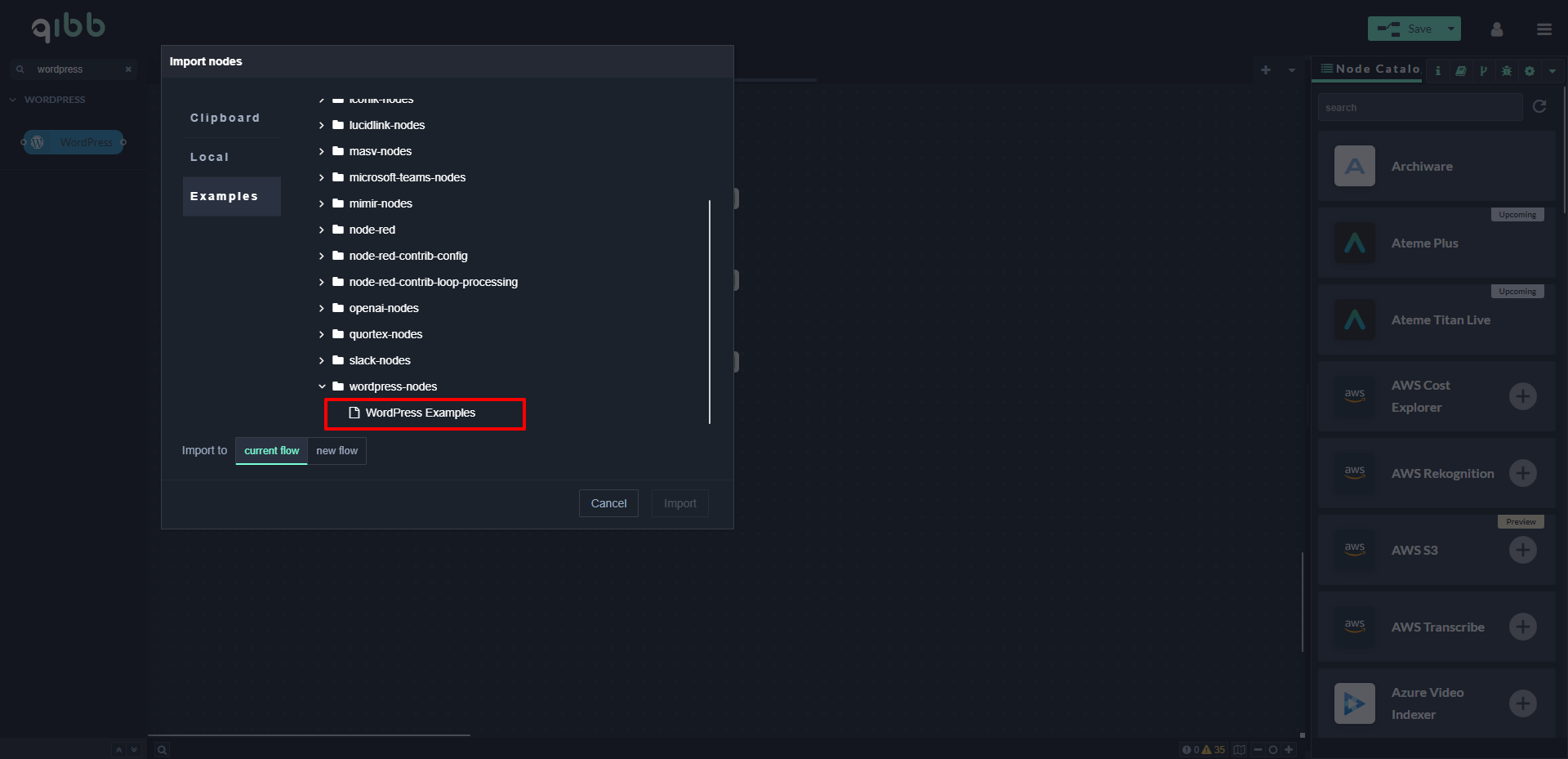WordPress
Introduction
WordPress is a content management system (CMS) that makes it easy to create and manage a website. It is one of the most popular CMS in the world. Millions of business owners, bloggers, and publishers use WordPress every day to maintain their online presence.
You can find more details and the supported operations on WordPress | qibb Catalog.
How to get started with WordPress integration
Before you get started using WordPress integration please make sure that you have admin permission in your workspace because you will need to create certain settings.
Log in to your WordPress application and select the Users menu on the left. Application passwords are recommended to allow authentication via non-interactive systems without providing your actual password. Application passwords can be easily revoked. Please create a new password by providing New Application Password Name and copy it.

Go to qibb Workflow Editor, open Node Catalog in the right sidebar, and install WordPress node by clicking on the + button.
Drag the WordPress node from the left bar to your flow.
Enter your host address (
https://your-wordpress-server.com/wp-json/) into the Host field.Provide your Username and Password in the Advanced section and you can start using the node!

Importing flow examples of a node
Once you've successfully installed a node from the qibb catalog, you can easily import example flows that showcase how the nodes can be used. These example flows are directly accessible within the Flow Editor and are designed to guide users with helpful hints, including how to configure mandatory parameters and credentials.
Here's how to import examples:
In the top right corner of the Flow Editor, click on the menu icon.
Select Import to open the Import Dialog.
Click on the Examples tab.
Choose an example from the list.
Confirm your selection by clicking on the Import button.
By following these steps, you are now ready to make basic API calls using the provided examples. For further exploration of what’s possible, you can find more complex examples in the Flow Catalog.

